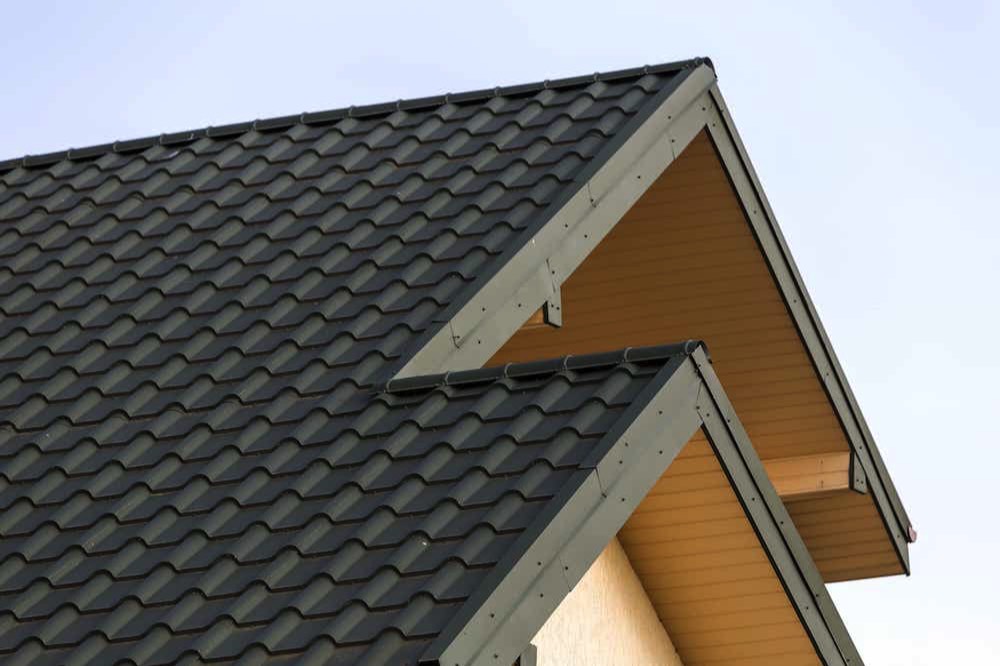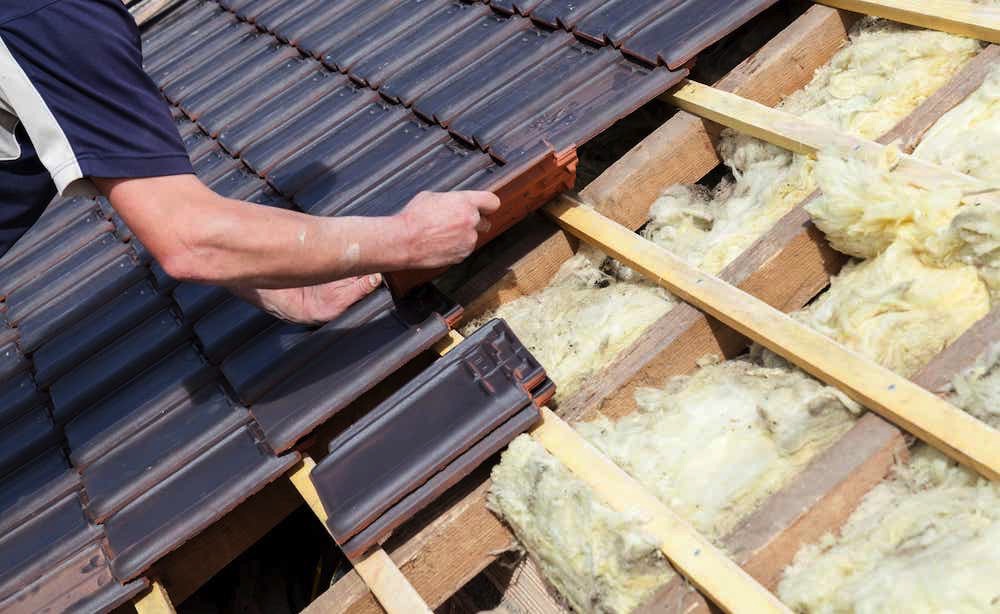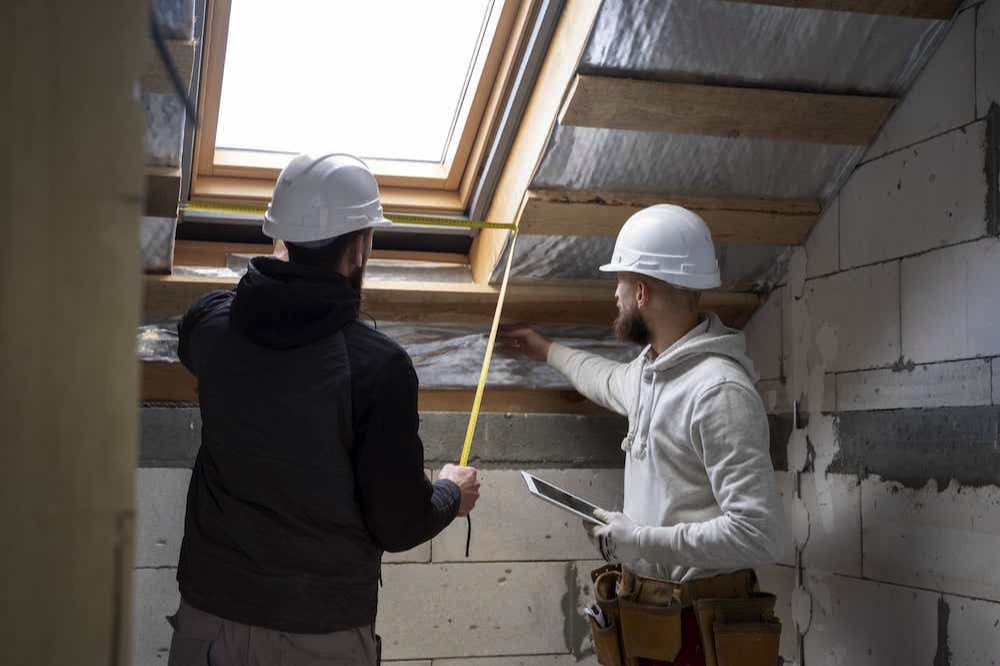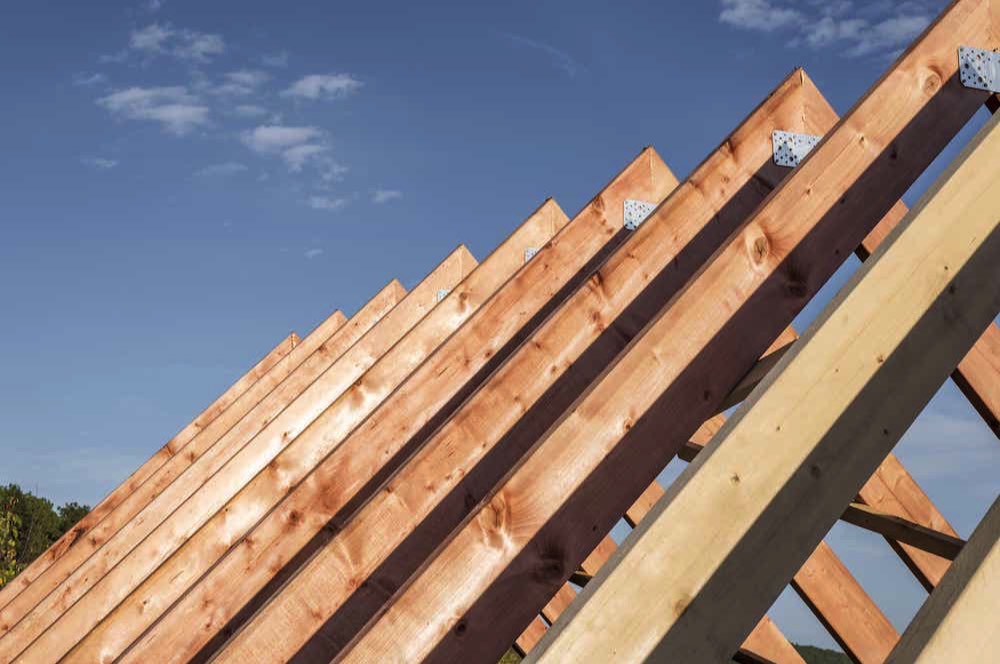Slate & Tile Roofing Specialists - Installation, Repairs & Restoration of Slate and Tile Roofs in orquay, Newton Abbot, Totnes, Exeter, and the South Hams
Slate & Tiles for all your roofing requirements
What do we offer?
To give you plenty of choice, we offer a wide variety of slate and tile roofing options, installed by our dedicated team.
Choose The Builders for
Flexibility Whatever your type of roof, whatever your style and whatever your budget, we’re able to source the most appropriate slate, tiles and fittings to meet your unique requirements.
Experience We have over 30 years experience in fitting slate and tile roofs, but still follow all recommendations offered by today’s leading manufacturers – using best practice and the best products.
Peace of mind We don’t just install roofs. We help you consider planning restrictions, aesthetic requirements, site exposure, roof pitch and cost – so you can have confidence your chosen slate or tile roof is the perfect fit for you. We also help you consider planning restrictions, aesthetic requirements, site exposure, roof pitch and cost.
The Ultimate Guide to Slate and Tile Roofing
When it's time to replace your roof, slate and tile are two of the best options for beauty, durability and value. These classic roofing materials have been used for centuries across Europe. Today, slate and tile roofs remain popular choices to protect homes while also providing aesthetic appeal.
This guide will explore the many benefits of slate and tile roofing to help you determine if one of these timeless materials is right for your residential or commercial building.
The Key Benefits of Slate and Tile Roofs
Slate and tile roofs have a number of advantages that make them smart investments compared to other roof types like asphalt shingles:
Exceptional Longevity
Slate roofs are known to last 100 years or more with proper installation and maintenance. Meanwhile, tile roofs typically survive 50-70 years before needing replacement. This dwarfs the average lifespan of asphalt shingle roofs, which is just 20-30 years. By choosing slate or tile, you'll avoid the time and expense of frequent roof replacements over the decades.
Enhanced Property Value
The long lifespan of slate and tile roofs directly translates to higher property value. While they require greater upfront investment than other materials, slate and tile pay for themselves over time by protecting your home for generations. Their longevity appeals to potential buyers, making homes with slate or tile roofs more attractive.
Superb Protection
Slate and tile roofs offer excellent defence against wind, rain, snow and other elements. They are also highly fire resistant, providing peace of mind and lower insurance rates. Tile, in particular, stands up well to hail storms and can remain intact when other roofing materials sustain major damage.
Sustainability
Slate is one of the most eco-friendly roofing solutions. Natural slate has an extremely low carbon footprint compared to manufactured materials. Tile roofs are also sustainable when made from recycled content. Their longevity again plays a role here - you won't have to continually replace and dispose of short-lived materials.
Visual Appeal
Beyond practical advantages, slate and tile roofs are simply beautiful. Slate comes in hues from grey to green and purple, adding a touch of elegance. Tile allows for tremendous customization with hundreds of colors, patterns, shapes and textures available. This versatility ensures slate and tile can complement any architectural style.
Types of Slate and Tile
Slate and tile roofing comes in many varieties to suit any project. The right choice depends on factors like climate, architectural style, aesthetics and budget. Popular options include:
Slate Types
Natural Slate - Split from quarried stone. Offers a classic, timeless look. Comes in colors like grey, purple, red and green.
Textured Slate - Natural slate textured or embossed to increase visual interest and uniqueness.
Synthetic Slate - Made from recycled rubber and plastic to replicate a natural slate look. More affordable but less durable than real slate.
Metal Slate - Slate appearance is simulated using metal sheets. Lightweight and very durable but expensive.
Tile Types
Clay - Classic terra cotta tiles made from fired clay. Available glazed or unglazed in earth tones and reds.
Concrete - Affordable alternative to clay tile made from cement, aggregates and color dyes. Lower maintenance than clay.
Metal - Lightweight steel or copper tiles shaped and painted to mimic clay or slate. Very durable but higher cost.
Composite - Tiles made from recycled plastic, rubber, resins and other materials. Combines durability with sustainability.
Ideal Home Types for Slate and Tile Roofs**
Here are the home architectural styles that lend themselves particularly well to slate or tile roofing:
Slate Roofs
- New England Saltbox homes
- French Chateau style homes
- English Cottages
- Georgian and Federal style homes
- Traditional Spanish Colonials
Tile Roofs
- Italianate Villas
- Mediterranean style homes
- Southwestern Casitas
- California Bungalows
- Spanish Eclectic architecture
Of course, slate and tile roofs can complement both traditional and modern homes. The wide colour and shape options available means they enhance most any architectural style when properly installed.
Climate Considerations
While appropriate for many climates, slate and tile work best in temperate zones without extreme weather fluctuations. Key factors include:
Snow - Slate and tile stand up to heavy snow loads. Their smooth, steep-sloped surfaces prevent snow accumulation. Clay tiles fare better than slate in areas with freeze-thaw cycles.
Wind - Properly installed slate and tile roofs can withstand hurricane-force winds over 100 mph. Higher profile concrete and clay tiles resist uplift forces better than slate.
Rain - Slate and tile do not absorb water like other roofing materials, enhancing weather protection. Clay absorbs some moisture if not well sealed.
Heat - Tile roofs handle heat exposure better than slate. however, slate holds up reasonably well in hotter southern climates if colour graded properly.
Cold - Slate and tile can crack in subzero temperatures if not flexibly installed using methods that allow for expansion/contraction. Freeze-thaw resilience is better with tile.
Consult a roofing professional to ensure your climate and weather patterns are matched to the appropriate slate or tile material and installation method.
Installation, Maintenance and Costs
Proper installation and care ensures your slate or tile roof provides decades of uninterrupted protection. Here are key considerations:
Installation
Should only be done by roofers experienced with slate and tile. Attention to detail is vital.
Roof decking must be in good condition and provide proper slope for drainage.
For slate - felt underlayment and horizontal battens are installed prior to slate. Slate is hung on the battens using stainless steel nails. Overlapping design promotes water runoff.
For tile - waterproof underlayment is installed before battens or roof strapping. Interlocking tiles are fastened to hanging system, with gaps at seams and ridges to allow drainage.
Maintenance
Occasional inspections of your slate or tile roof are wise to spot any damage from weather, falling debris, animals, etc. Minor repairs can prevent bigger issues.
Have a roofer clear debris like leaves from valleys and gutters to prevent blockages that can lead to interior leaks.
Resealing joints, flashing and ridges every decade or so prevents moisture issues that can damage roof decking and rafters if neglected.
Partial slate or tile replacement may be needed after extremely severe storms. Since the materials themselves are so durable, damage is usually minimal.
Cost
Clay and concrete tile is the most affordable option. Synthetic slate cuts cost somewhat but may not last as long. Natural slate is the premium choice lasting centuries.
Factors like roof pitch, accessibility, structural enhancements and custom details can increase project costs. Get a detailed roofing quote for your specific property.
Choosing a Roofer for Your Slate or Tile Project
Don't trust your valuable slate or tile roofing project to just any general contractor. Look for these qualifications in your roofer:
Decades of demonstrated experience successfully installing slate and tile roofs in your area.
Specialised expertise in historic roof restoration if your project involves an older home.
Excellent ratings and client reviews confirming quality workmanship and service.
A portfolio of completed slate and tile roofs similar to yours.
Knowledge of local building codes and permit/approval processes.
Manufacturer training and partnerships that provide access to premium materials.
Comprehensive insurance coverage including liability and workers compensation.
Warranties to guarantee their slate and tile roofing work.
Investing in a reputable local slate and tile roofing company is the smart play to ensure your new roof meets the highest standards of durability, beauty and protection.
Request a Quote and Contact Us
To request a quote for your roofing project, we invite you to our contact page Our team will promptly get in touch with you to discuss your requirements and can provide you with a detailed estimate.
The History of Slate and Tile Roofing
It's easy to see why slate and tile have been used to top buildings for ages. Let's look back at the origins and evolution of these traditional roofing materials:
Slate Roofing
Slate roofing dates back over 700 years in Europe. The material was popularised for its durability, aesthetics and natural waterproofing.
Slate quarrying began in England, Scotland and Wales to supply roofing slates across Britain. Regional quarries resulted in a variety of slate colors and grades.
Slate roofing spread to America in the 1700s after Welsh emigrants brought the roofing tradition. Major slate deposits in Vermont and New York helped it gain popularity in the U.S.
Today, slate is exported globally from leading producers like Spain, China, Brazil, and India. Modern techniques have increased the versatility and customization of slate roofing.
Tile Roofing
Tile roofs first appeared in China and the Mediterranean region over 2000 years ago. Clay tiles were the dominant roofing method in ancient Rome and Greece.
Terracotta clay roof tiles spread across Europe in the Middle Ages and Renaissance. They became the roofing standard due to fire resistance and durability.
Concrete roof tiles emerged in the 1900s as a substitute to clay tiles. Concrete tiles quickly gained favor for their lower cost, standard sizing and lighter weight.
In modern times, tile roof manufacturing has gone global, expanding color and pattern options. Advances in composite materials have also improved tile quality and sustainability.
The Manufacturing Process
Slate and tile roofing begins as natural stone and clay that is mined or excavated from quarries and deposits around the world. These raw materials then undergo sophisticated engineering and manufacturing to become reliable roofing products.
Slate Tile Manufacturing
Slate deposits are cut into large blocks using high-powered saws. Blocks are trimmed and split into thin sheets.
Sheets are shaped and sized using automated punching, calibrating and beveling machines. This optimizes water runoff.
Color sorting machines grade each slate tile. Tiles are also gauged for thickness consistency and structural integrity.
A final quality control check is done before crating slates for distribution. Advanced packing protects them during shipping.
Clay Tile Manufacturing
Clay is refined and mixed with water to achieve desired texture and plasticity for shaping.
The clay body is pressed or extruded through dies to form tile profiles. Textures and colors are often added in the clay body.
Tiles undergo controlled drying to remove moisture before firing in high-heat kilns. Firing hardens the clay into ceramic tile.
Glazing may be applied for additional colors and effects. Tiles are sorted by size, shape and quality before shipment.
This combination of artisan craftsmanship and modern technology allows slate and tile manufacturers to create consistent, high-performance roofing materials.
Some of the areas we cover in Devon and the South West,
Torquay Roofing, Paignton, Brixham, Newton Abbot Roofing, Teignmouth, Dawish, Bovey Tracey, Ashburton, Totnes Roofing, The South Hams, Salcombe Roofing, Plymouth, Exeter, Ottery St. Mary.
Services
Home Improvements
Kitchen Fitting
Bathroom Fitting
Extensions
Loft Conversions
Garage Conversions
Bricklaying & Stonework
Plastering
Refurbishments
Guttering
Chimney Repair
Where we work
Landscaping
Flooring
Carpentry
Gardens & Patios
Plastering
Damp Proofing
New Builds
Disabled Living Adaptations
Roofing
Keep up to date
Copyright The Builders Ltd Registered | Site Map | Website By Sign Art









